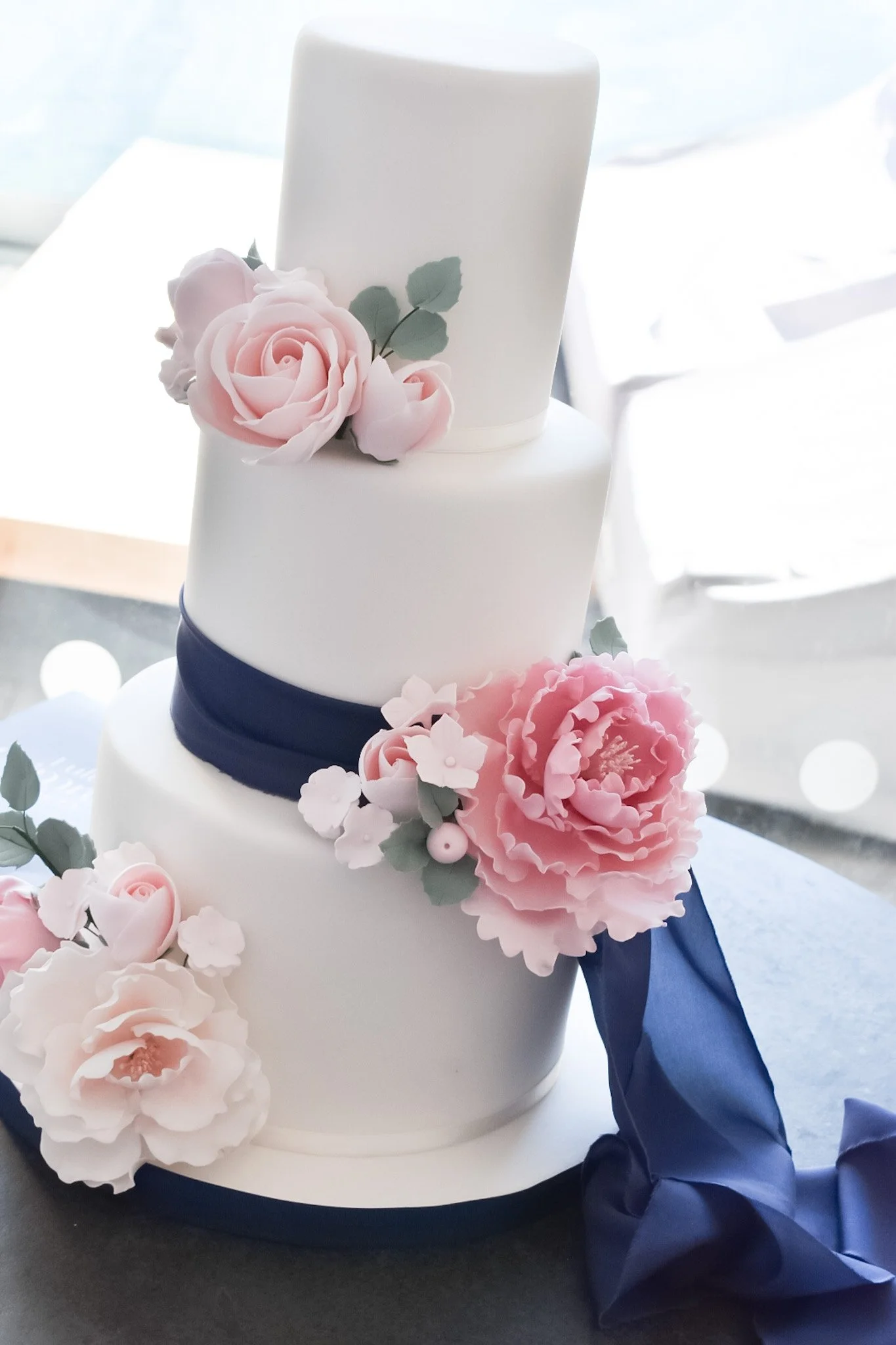How to Choose Between a Semi-Naked, Buttercream or Fondant Wedding Cake (Expert Guide)
How to Choose Between a Semi-Naked, Buttercream or Fondant Wedding Cake (Expert Guide)
By Lulu’s Primrose Bakery | Luxury Wedding Cakes in Devon & Cornwall
When it comes to planning your wedding cake, the design is just as important as the flavour. One of the key choices couples face is deciding on the finish—whether to go for a semi-naked, buttercream, or fondant-covered cake. Each option offers a distinct aesthetic, texture, and level of versatility.
As a luxury wedding cake designer, I work closely with couples across Devon and Cornwall to create beautiful, bespoke cakes that not only taste exquisite but also perfectly reflect their style and celebration. This guide will help you make an informed decision about which finish suits your wedding best.
Semi-Naked
The Look:
Light, Rustic, and Romantic
A semi-naked cake features thin layers of buttercream scraped back to reveal the sponge beneath. It offers a relaxed, romantic feel—perfect for rustic, boho, or garden weddings.
Pros:
Chic and understated: The “barely there” finish gives a contemporary, natural look that works beautifully with fresh flowers or dried foliage.
Perfect for rustic venues: Think barn weddings, country estates, or coastal settings—it suits them all.
Ideal for summer weddings: The light aesthetic pairs well with fresh, fruity flavours like lemon & elderflower or raspberry & vanilla.
Considerations:
Less protection from the elements: Without a full coating, sponge can dry out more quickly, so semi-naked cakes are best for indoor receptions or cooler months.
Limited design flexibility: They tend to suit more casual or organic wedding styles, and intricate detailing isn’t possible.
Semi-Naked Wedding Cake @Sandy Cove Hotel
2. Ganache Buttercream Cake
The Look:
Creamy, Customisable & Elegant
Smooth, creamy, and endlessly versatile, buttercream cakes can range from sleek and polished to textured and whimsical. They’re the perfect middle ground between minimal and opulent.
Pros:
Flavour-forward: Buttercream adds a delicious, melt-in-your-mouth texture that many couples (and guests!) prefer over fondant. This style keeps a lot more moisture inside the cake because it is first layered with a smooth coating of Belgian white chocolate ganache before being finished with a full layer of buttercream.
Highly customisable: From smooth and sophisticated to textured and artistic (think palette knife florals or ridged finishes), buttercream lends itself to a wide range of styles.
Perfect base for fresh flowers, pressed edible flowers or gold leaf: It pairs beautifully with organic embellishments or statement styling.
Surprisingly suitable for higher temperatures: This is a ‘pro’ you probably were not expecting! I apply a fine layer of white chocolate ganache to all of my buttercream wedding cakes, which makes it structurally more stable to withstand higher temperatures.
Considerations:
Limited colour flexibility: Couples can be slightly restricted by the range of colours. Unlike fondant, it can be difficult to achieve very rich shades with buttercream.
Not suitable for more adventurous cake designs: This style of cake is also slightly less polished, meaning that it is not suitable for very formal or architectural cake designs.
3. Fondant-Covered Cake
The Look:
Polished-Detailed-Couture
Fondant offers the most refined, smooth finish—ideal for formal weddings or cakes with detailed, couture-style decoration. It provides a sleek, flawless canvas for intricate sugar work, stencilling, painting, and structural designs
Pros:
Immaculate finish: Ideal for grand, luxurious weddings where every detail counts.
Supports intricate design elements: Perfect for sugar flowers, lace detailing, monograms, and hand-painted designs.
Durable and weather-resistant: Fondant holds up well in warmer conditions and provides a protective seal for the cake inside.
Personalisation options are endless: Compared to semi-naked and buttercream, fondant creates an amazing blank canvas for your cake to be decorated in so many ways! Usually decorated with hand-made sugar flowers - each leaf and petal can be completely personalised to your individual personalities and wedding theme.
Considerations:
Taste preference: While modern fondant is more refined than ever, some guests may prefer the creaminess of buttercream.
Less rustic or organic: If you’re after a laid-back or undone look, fondant might feel too formal.
Fondant Finished Cake @Sandy Cove Hotel
Expert Tip from a Luxury Wedding Cake Designer
Not sure which to choose? You don’t have to commit to just one. Many luxury cakes mix textures—like fondant tiers with buttercream tiers—for the best of both worlds. During your consultation, I’ll help you design a cake that reflects your style, complements your venue, and stands up beautifully on the day. The beauty of a bespoke design is that it’s completely tailored to you.
Need Inspiration?
Take a look at some of the semi-naked, buttercream, and fondant-covered wedding cakes I’ve created for couples across Devon and Cornwall. You’ll see how each finish can transform the look and feel of your wedding day.
Choosing the right finish for your wedding cake is about more than just appearance—it’s about creating a centrepiece that reflects your style, holds up beautifully on the day, and leaves your guests wanting just one more slice.
Whether you’re dreaming of an effortlessly chic semi-naked cake, a buttercream beauty, or a fondant showstopper, I’d love to help you create a cake that’s as unforgettable as the day itself.
Ready to design your dream wedding cake? Get in touch to book your consultation—or order a luxury wedding cake flavour sample box.




